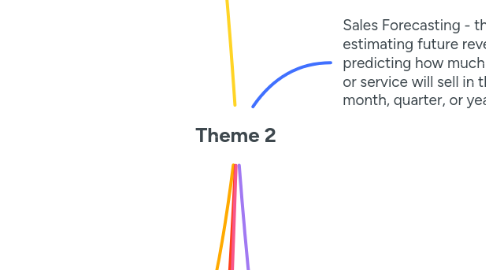
1. External finance - refer to money that comes from outside a business
1.1. Family & Friends
1.1.1. Businesses can obtain a loan from family or friends that may not need to be paid back or are paid back with little or no interest charges
1.2. Banks
1.2.1. It is a sum of money borrowed from the bank that is secured against a business property and paid back in instalments close instalmentsSmaller chunks that a large payment is broken down into that are paid back over a period of time., usually over a long period of time
1.3. Peer to Peer
1.3.1. Individuals with available savings pool it with others in a peer investment scheme such as Funding Circle
1.4. Business Angles
1.4.1. Business angels tend to be more willing to take a risk than banks. Angels often offer advice and guidance to the businesses in which they invest
1.5. Crowd Funding
1.5.1. Involves getting small amounts of finance from a large amount of people
1.6. Share Capital
1.6.1. They give away a percentage of the business in return for getting finance invested in the business
1.7. Venture Capital
1.7.1. Involves investors, or venture capitalists, providing a business with loans and share capital which is usually to support business growth
1.8. Overdrafts
1.8.1. A facility that will allow you to withdraw more money from your account than is available
1.9. Leasing
1.9.1. A way of renting an asset that the business requires, such as a coffee machine. Monthly payments are made and the leasing company is responsible for the provision and upkeep of the leased item
1.10. Trade Credit
1.10.1. Allows a business to obtain raw materials and stock but pay for them at a later date
1.11. Grants
1.11.1. A fixed amount of money usually awarded by the government, EU (European Union) or charitable organisations
2. Planning
2.1. Business Plans
2.1.1. A business plan is a document created by a business or entrepreneur that provides details about each element of the business. Creating a business plan means an entrepreneur considers all of the different elements of their business
2.2. Calculate net cash flow, closing balance, total inflows, outflows.
2.3. Cash flow forecast
2.3.1. A prediction/estimate of the movement of cash into and out of a business over a period of time
3. Internal finance - refer to money that comes from within a business
3.1. Sales of assets
3.1.1. Selling the assets of a business to generate more profit for example items they no longer need like machinery or transport
3.2. Owners Capital
3.2.1. The amount of money and resources an owner invests into their business to help it succeed
3.3. Retained Profit
3.3.1. Profit that has been made by the business in previous years that is then reinvested back into the company
3.4. Advantages and disadvantages of Internal Finance
3.4.1. Low costs, retention of control and ownership, no approvals needed, and no legal obligations
3.4.1.1. ADVANTAGES
3.4.2. Limited amount of finance and constricted number of options.
3.4.2.1. DISADVANTAGES
4. Liability
4.1. Unlimited
4.1.1. Unlimited Liability is when the personal assets of the business owner are at risk of being taken or lost
4.2. Limited
4.2.1. Limited Liability is when the personal assets of the business owner are safe and seperate from the business and arent at risk
5. Sales Forecasting - the process of estimating future revenue by predicting how much of a product or service will sell in the next week, month, quarter, or year
5.1. Purpose of a sales forecast
5.1.1. They commonly focus on what will happen in the future to: The volume and value of sales. The size of the market. Sales as a result of promotional activity
5.2. Affects of Consumer trends, economic variables and actions of competitors on Sales forecast
5.2.1. Consumer Trends
5.2.1.1. Changes in consumer trends, such as demand for more sustainable, healthy, or technological products, can affect the demand for a company's products or services, thereby influencing sales forecasting
5.2.2. Economic Variables
5.2.2.1. This increase in purchasing power can lead to higher demand for products or services, resulting in a positive impact on sales forecasts. Conversely, during an economic downturn or recession, consumers may have less disposable income, leading to reduced demand and a negative impact on sales forecasts
5.2.3. Actions of competitiors
5.2.3.1. By analysing your competitors' actions, you can identify trends in customer preferences, technological advancements, and industry shifts. These trends can significantly impact your sales, and by incorporating them into your sales forecast, you can ensure it is as accurate and realistic as possible
5.3. Difficulties of sales forecasting
5.3.1. Markets can be fickle. The further ahead the forecasts are, the more likely they are to be inaccurate. An unexpected fall in sales revenue may lead to reduced budgets; cash flow forecasts may have to be adjusted and more working capital/additional finance may be needed
6. Sales, Revenue & Costs
6.1. Calculate the sales volume of a business and the sales revenue
6.1.1. Sales Volume = Sales Revenue / Selling Price
6.1.1.1. Sales Revenue = Selling Price x Sales Volume
6.2. Calculate fixed costs and variable costs
6.2.1. Fixed Costs = TC - VC
